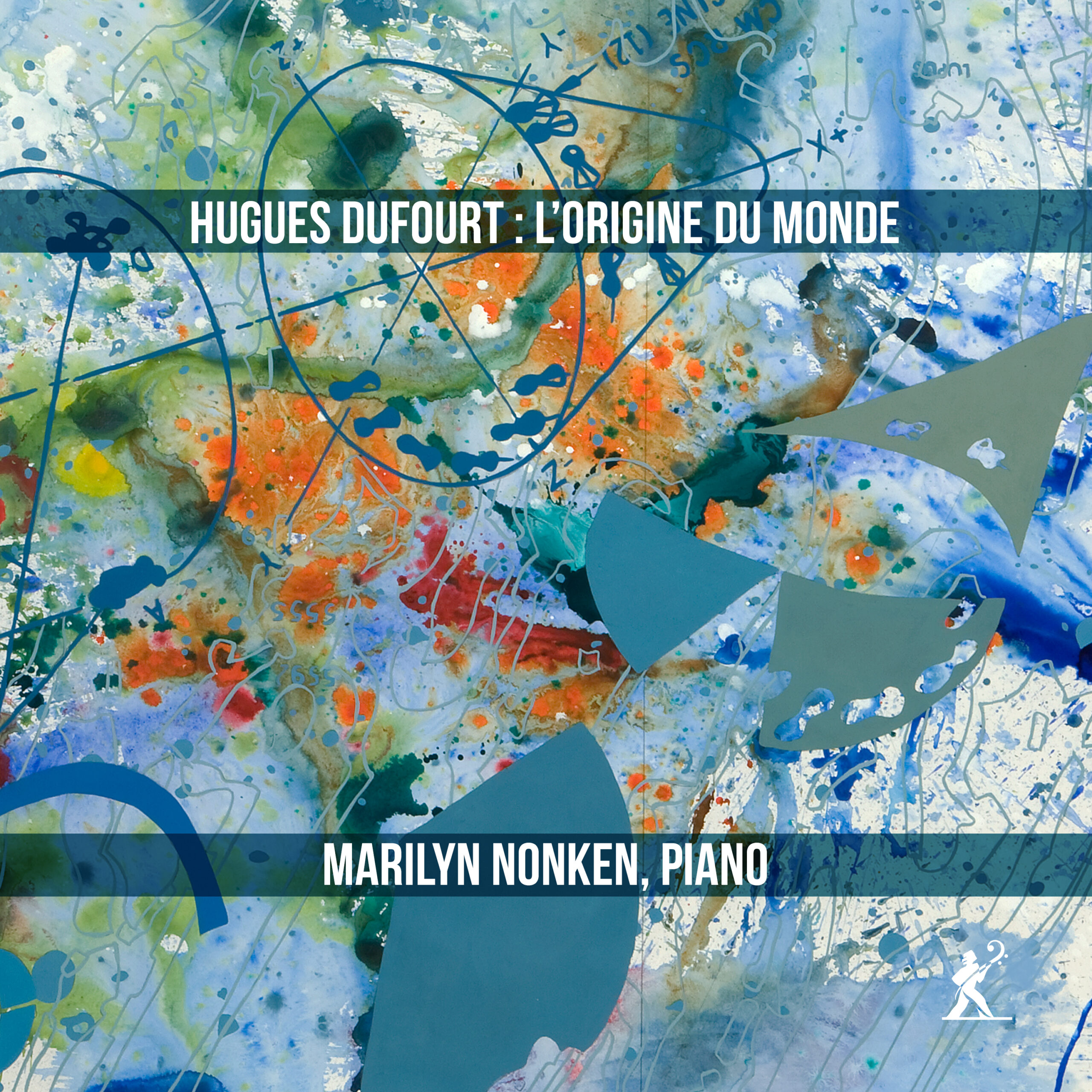Anaclase
With several strings to her bow (pianist, teacher, musicologist), Marilyn Nonken has long demonstrated her attachment to spectral music, whether through articles or recordings. After recording the complete piano works of Tristan Murail – that was in 2005; to this should be added the very recent pages, which have been studied by François-Frédéric Guy, among others [read our review of the CD] –, it is the work of Hugues Dufourt that she is interested in today, a creator whom she thanks for having shown her “how to unearth the affinities (the mysterious bridges) that allow access to the fundamental essence of musical thought.” Recorded in New York in December 2023 and April 2024, this program brings together six pieces that we will approach in chronological order, immediately acknowledging, in most of them, the performer’s highly controlled playing and ideal control of dynamics.
The first three delineate a sort of German period for the composer, if only by their titles – An Schwager Kronos (Brussels, 1994), Meeresstille (October in Normandy, 1997), and Rastlose Liebe (Paris, 2000). The earliest of these works, An Schwager Kronos, seeks to reconnect with the fantastical element at the heart of the Lied, the song that expresses various emotions linked to solitude (wandering, melancholy, resignation, etc.). Its contrasting sections are often delivered within a very rich pedal halo, favoring spectral distortion. A mist then appears, even a droplet effect, suggesting that several pianos are at work.
“The piano is no longer—if it ever was—the instrument of personal confidence. In the 20th century, it has become that of formal matrices,” writes the Lyon native in the notice for Meeresstille. Originally, this title comes from a poem by Goethe (1795) that Schubert set to music (1815). The calm it evokes does not bode well; it is the calm before the storm. The sails hang, and the sailor, petrified in the middle of a liquid desert, reconnects with the anguish of his loss. This is why Dufourt, in addition to claiming a pianistic language capable of interiority and synthesis, refers to psychoanalysis – “For Freud, this would be the very expression of the death drive, if by that we understand the irresistible temptation to return to the inert that threatens every human beyond the ‘pleasure principle’.” Illustrating the enduring threat, this quarter-hour proves colorful and intense, relying less on material than on resonance. In turn, “Rastlose Liebe” takes the title of a Schubert song (1821) inspired by a poem by Goethe (1776). Dufourt continues his reflection on the song, of which he asserts that the truth lies “in the earthquake” as far as our times are concerned. Opening with a gallop, this third page continues with turbulence, the opposite of the clarity and silences of the previous two. Let us now turn to the French period of the program, with L’Origine du monde (Strasbourg, 2004), La Fontaine de cuivre after Chardin (Paris, 2014) and Tombeau de Debussy (Strasbourg, 2018) – we know the musician’s special connection with painting, recently explored in a study of Les Continents after Tiepolo [read our review of the book]. Inspired by Courbet’s eponymous painting (1866), a concerto for piano and small ensemble forms the heart of the disc, whose aim is not virtuosity but the integration of the piano sound with the surrounding sounds. For example, as its author explains, “the percussion is conceived as an extension of the piano’s sound box, giving the latter an almost elastic appearance.” Under the baton of Jonathan Haas, conducting the NYU Contemporary Music Ensemble, the sensuality and richness of this piece command attention, while its tensions lead to a climax followed by a calming climax.
After the eulogy of the flesh, the composer now celebrates a still life by Chardin (c. 1733). We find here the spirit of his earlier piano works, but shorter and more striking, as if the light emanating from this oil on wood were incompatible with the cloud of sound. Finally, the homage to Debussy reveals itself to be devoid of the grand, dislocated chords so beloved by our contemporary, with, at times, a contemplative temptation—of course, this is not Hugues Dufourt’s nature…
@divineartrecordingsgroup
A First Inversion Company
Registered Office:
176-178 Pontefract Road, Cudworth, Barnsley S72 8BE
+44 1226 596703
Fort Worth, TX 76110
+1.682.233.4978












